Sun’s Out, Tongues Out: Summer Tips for Dogs
As an Amazon Associate, I earn from qualifying purchases. We may receive a commission for purchases made through these links. This site also contains affiliate links to products besides Amazon, like Etsy. We may receive a commission for purchases made through those links too (at no additional cost to you).
Dog Tips for Summer Travel
Summer is one of the most popular times of year for people to travel on vacation. The sun’s shining, it’s no longer cold out, and everything is finally fully open for the season. With all the excitement to grab your pup and start to explore, it can be easy to forget the different things your dog may need now that it’s hotter out. So, before you take your pup on some fun, warm weather adventures, take a look at our top summer tips for dogs to help keep you and your pup safe and happy while you are out and about.
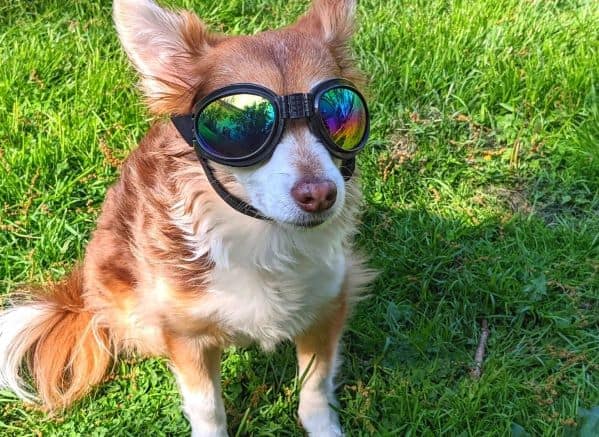
If you are looking for a group of Traveling Pet Owners where you can ask questions or get ideas on where to take your dog next, come join us on Facebook.
You can also subscribe for access to our Freebie Library to help you on your travels and stay updated with our once-a-week newsletters.
Summer Safety Tips for Dogs
Like many of you, I love summer and spending as much time outside as possible with my dogs. With the hotter temps, higher humidity, and crowds of other people that have the same idea, here are the extra steps I take to keep my dogs safe and happy whenever we leave the comfort of our home. Whether you are taking your pup to a local park or packing up for a longer vacation, here are some summer safety tips to ensure your dog enjoys the trip.
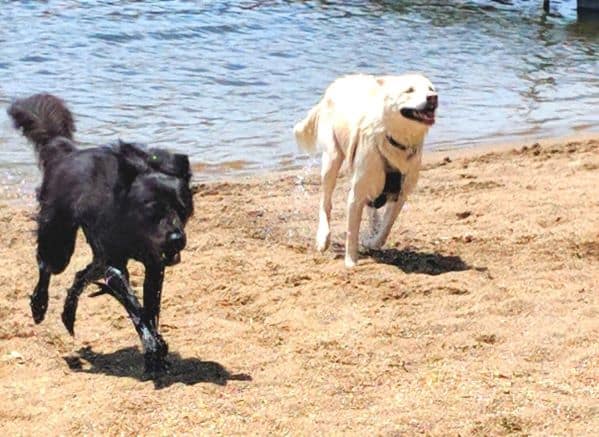
Fleas, Ticks, and Mosquitoes
Now that summer is in full swing, beware the bugs that bite! Pests like fleas, ticks, and mosquitoes can carry diseases like Lyme or Heartworm. It is super important to make sure your pets are on the proper preventatives to keep them safe.
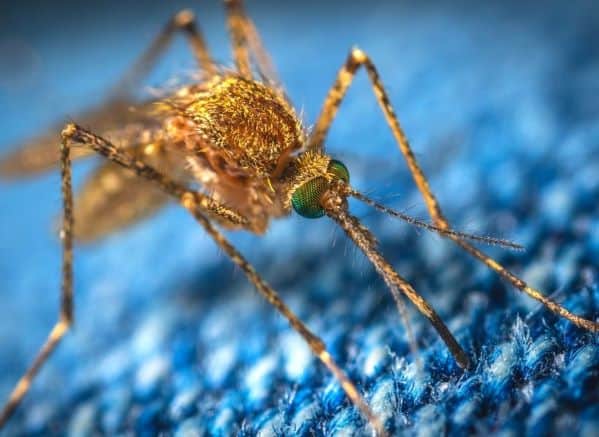
Even if your animal spends little to no time outdoors, they are still at risk. They may not spend time outside, but bugs can still make their way indoors. If your pup has been in a grassy or wooded area, remember to regularly check them for ticks. Not only will this help keep them safe, but it will also prevent them from accidentally bringing these pests into your home and even onto you.
Keeping Dogs Safe in Hot Weather
One of the biggest safety concerns during the summer for your dog is dehydration. With their cute furry coats and inability to tell us when they are starting to feel off, this can be a dangerous occurrence if we owners aren’t careful. This section will go over several ways you can keep your dog safe in hot weather and what symptoms your pup may show if they are starting to overheat.
How to Keep Your Dog from Overheating:
“Offense is the greatest defense” is the saying that comes to mind. The best thing you can do for your pup is to prevent them from overheating in the first place. Here are several things you can do in advance to help keep your dog safe from the heat this summer.
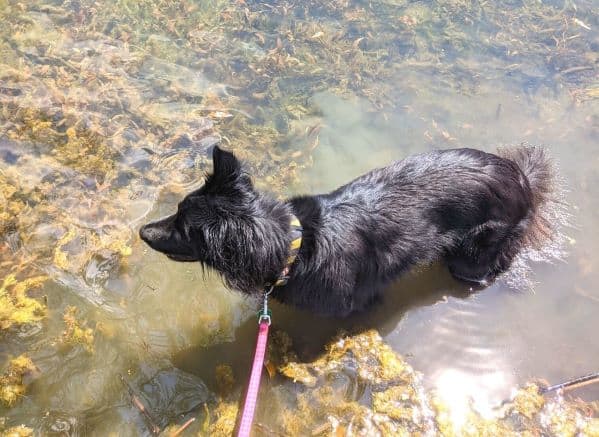
- Plan Appropriate Activities: Consider what the weather will be like before you plan your activities. You may need to adjust your plans because it will be too hot for your dog to participate safely. For example, I love camping but depending on the average temperature of the campground in the summer, I know that it may be safer for my dogs to stay at a hotel instead due to the heat. This also goes for summer hikes. When the temperature and humidity get too high, we change our plans for shorter, shadier hikes, or go early in the morning. Other times we simply replace the hike with an indoor activity to keep our dogs safe from overheating.
- Prepare for Your Activities: Plan properly for whatever activity your dog will be doing. Even if you are just taking them on a long car ride, there are certain Dog Road Trip Supplies you can get to keep your pups cool. Portable fans and window shades can help keep your car cool, especially if your windows aren’t tinted.
- Dog Haircuts or Summer Shaves: Before you book your dog for a summer trim, do some research on the breed of dog you have to see if it will help or hurt them. Most “winter-type” breeds like Huskies or American Eskimos should NOT be shaven or have their hair trimmed down for summer. They have a special double coat that helps keep them cool in summer and warm in winter. If you do cut or shave them, they will be more likely to overheat. A good groomer will let you know if a cut or shave is a good idea. If you are not 100% confident in your decision, please run it by your vet. At the same time, if you do choose to give your dog a shorter haircut or shave, be aware that they can get sunburnt. Luckily, they do make dog sunscreen to help keep your canine’s skin protected.
- Be Aware of Your Dog’s Breed Capabilities: As discussed above, certain canine breeds are more likely to overheat than others. There is also a difference in the simple range of physical capabilities between each type of dog. For example, smaller dogs may not be able to walk as far as larger dogs. Be sure to plan your outing around what your dog is physically built for.
- Keep Your Dog Hydrated: Make sure you carry enough water on outings to keep everyone properly hydrated. and that water breaks are given frequently. If your dog doesn’t like to drink water, there are additives that you can add to make it tastier. If possible, you can also provide frozen snacks like homemade popsicles to help keep them cool and hydrated.
Is My Dog Overheating?
No matter how much you prepare, your dog may end up overheating. It is important to know the signs so you can tell if your dog is getting too hot or dehydrated. It is equally important to know if your pup needs medical intervention because they are suffering from heatstroke.

- Excessive panting: Dogs will pant for any number of reasons. Excitement, nerves, and to help cool themselves down. If your dog has started panting more than usual, it may be time to take a break and start cooling them down.
- Skin Test: Depending on your dog’s hair, you can check their skin elasticity. Lightly ‘pinch’ a piece of skin and gently pull it slightly away from the body. If the skin snaps back right away, they are hydrated. If the skin doesn’t instantly go back into place, they need water.
- Coordination/Confusion: If your pup has started acting confused or has started showing signs of clumsiness like stumbling or falling over, then they most likely are suffering from more severe signs of overheating and heat exhaustion.
- Body Temperature: Taking your dog’s temperature is the best way to check if they are overheating and to know how serious it is. This temperature does need to be taken rectally so you will need the thermometer from your DIY Dog First Aid Kit. If your dog’s temperature is between 103 -105 F it is time for you to step in to start cooling them down. If their temperature reaches 106 F, they are starting to suffer from heatstroke and need medical attention right away.
How to Cool Down a Dog
When your dog starts getting too hot or dehydrated, it is important to immediately start taking steps to allow them to cool down before it becomes dangerous.
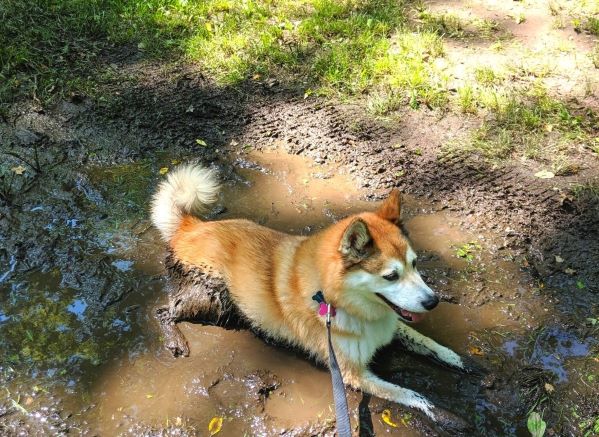
- Stop the activity. Most dogs don’t know when to call it quits. This means that you will need to step in and force them to take a break. If you think they are starting to approach the danger zone, you may need to carry them back to your car or house, so they don’t continue to over-exert themselves.
- Find shade. Try to find shade for them to rest in so they can cool off out of the direct sunlight.
- Cool them down. Offer them water or another way to cool off. You can pour water on their head, feet, and stomach to help drop their temperature. There are also cooling pads, handkerchiefs, and towels made for dogs that can help. Or if there is a safe body of water around, you can let them wade or lay down in the water.
- Bring to Vet. If your dog is showing signs of severe overheating or heat stroke, bring them to a vet clinic immediately. Your pup will most likely need an IV and possibly other medical treatments to bring their body temp down safely. The longer you put this off, the worse it can be for your pup. If they get too bad it can cause long-term health complications or even death.
To offset any potential costs of vet bills or disruptions to your vacation, consider adding travel insurance for your dogs to your insurance package.
Blue-Green Algae Toxicity in Dogs
Blue-green algae toxicity in dogs is a serious danger to any dog that loves to swim while exploring the outdoors with its owners. Dogs (and humans) will get sick by accidentally ingesting the contaminated water either by drinking it or by licking it off their own fur.
Depending on the amount of toxin ingested, symptoms can show up immediately or even up to 1 hour after exposure. These can include panting, excessive drooling, disorientation, vomiting, confusion, diarrhea, liver and/or respiratory failure, and death.
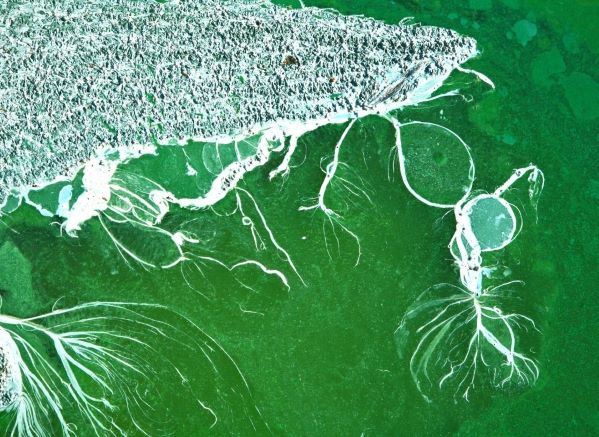
What is Blue-green Algae?
Technically, blue-green algae is a bacteria called cyanobacteria- not real algae at all. And not every type of cyanobacteria is harmful BUT because of the severity of the illness, it is best to treat every kind as if it is toxic.
Cyanobacteria can be found in pretty much any body of water and becomes dangerous when the bacteria start to multiply and causes an ‘algae bloom’. These blooms are more common in warm, slow-moving water.

Treatment and Prevention of Blue-green Algae Toxicity in Dogs
Unfortunately, there is no true treatment for the toxins, so it is incredibly important to act fast if you think your dog has come into contact with contaminated water. Call a vet immediately to let them know that you are on your way in.
You will most likely be instructed to induce vomiting which can greatly increase the chance of survival. This can be done using the hydrogen peroxide in your Dog First Aid Kit. Once you are at the clinic, they continue to focus on flushing the bacteria out of your dog’s system as quickly as possible. Otherwise, the vet will fight against the symptoms to help your dog survive.
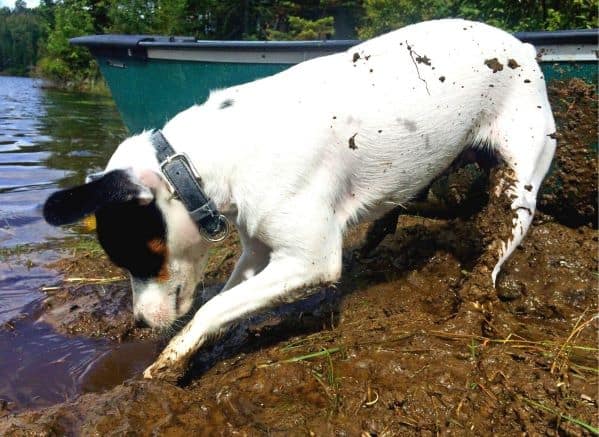
Sadly, the outcome for dogs that have gotten blue algae poisoning is not great. Because of this, it is best to work on preventing our dogs from encountering it all. Don’t let your dog drink or swim in slow-moving or smelly water. If they do, rinse them off right away to limit the chance of ingestion. You can also look up the data regarding the health status of the lakes in the areas you will be traveling to. Be sure to check the area’s website and any signs posted in the area for updates.
For more detailed information, we put together a post to help dog owners have a better understanding of blue-green algae. Just click here to check it out.
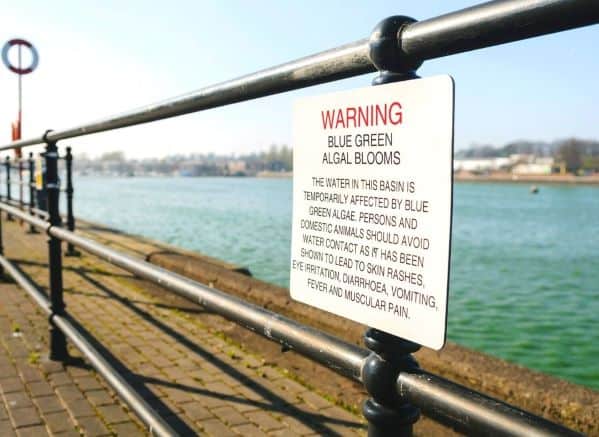
Summer Storms
Summer storms can be quick and severe. Heavy rains can bring on flash floods, and lightning strikes can be dangerous. Not to mention hail, high winds, mudslides, tornadoes, or even hurricanes. Make sure to be on top of the weather reports so you can change your plans or take cover accordingly. If your pup is afraid of thunderstorms, you can take steps to help them with their anxiety.
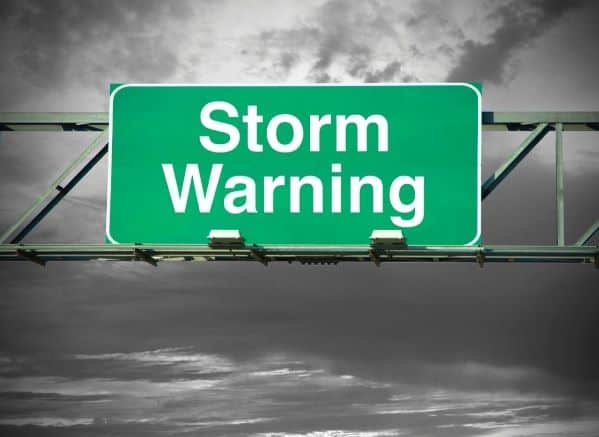
After the storms, flash flooding can still occur, and the ground may be unstable after heavy rains. Be careful near any cliffs or edges as they may be weakened and give way.
Wildlife and Your Dog
Most wildlife will be more active in the summer months. Keep an eye on your dog and make sure they don’t harass the local animals. This will be for the good of everyone. Many parks have laws in place and harassing the wildlife can result in a fine (not to mention that it is inconsiderate and potentially harmful to the wild animals). Doing this will also help keep your dog safe. Remember, as cute or small as the animals are, they all have defensive mechanisms in place to help them survive.
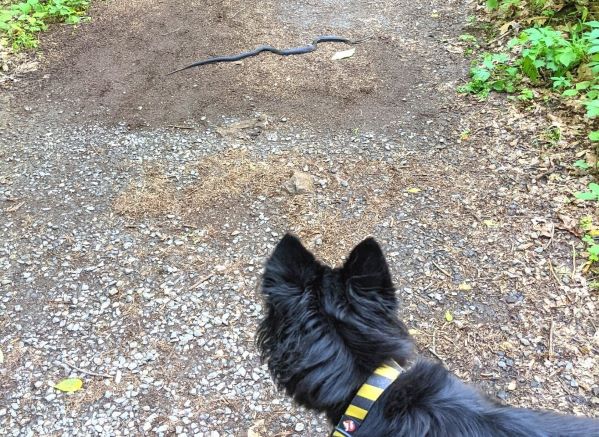
It will also be beneficial to do a quick google search on what type of animals can be found in the area, so you know what to be on the lookout for. If your animal does get bit or injured by an animal that may be venomous like a snake, do not try to catch or kill it. Take a picture of the animal from a safe distance so medical staff can identify what the animal was and if it was venomous. This way they won’t have to concern themselves about treating a similar bite on you!
Dog Foot Issues in the Summer
Just like in winter, you need to keep an eye on your dog’s feet in the summer. It may be a good idea to bring booties or salve on your outing to protect their pads. This is because their feet can get burnt on hot pavement or sand.
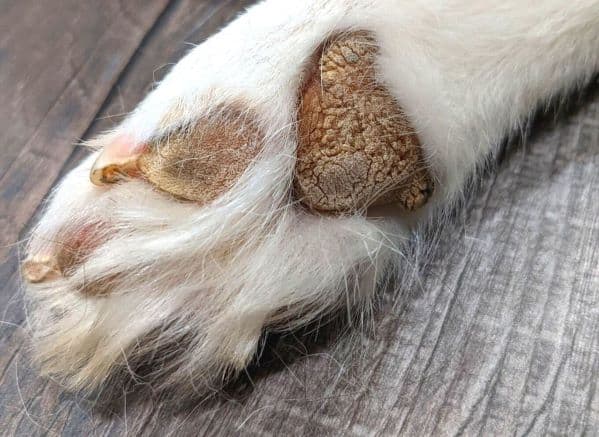
If their feet are wet from rain or swimming and they are active on rough surfaces, their pads can also become raw and cut up. There is also a chance that they can end up with thorns or other items stuck in or between their paws. It is best to periodically check their feet and between their toes to make sure they are not developing any issues.
Handling Summer Crowds with Your Dog
Since summer is a popular time for everybody to travel and spend more time outside, be prepared for you and your dog to encounter a wide variety of people and animals. Get ready to be an advocate for your dog because not everyone will respect your pup’s boundaries. You will also want to be prepared to encounter another dog (or any type of animal) owners who either are not familiar with dog behavior or the respectful way to approach and interact with you and yours.
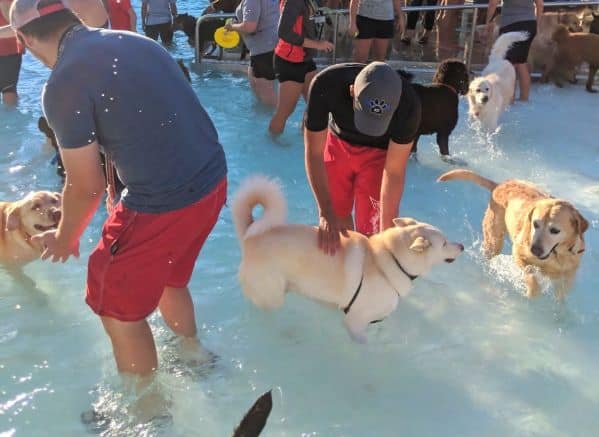
On the other side, it is your responsibility to follow the local laws (including keeping your dog on a leash if required and picking up poop). Make sure to check with people before you let your dog approach them or their animals. Your dog may be well-mannered and okay with it, but it doesn’t mean that other dogs and people will react well with your pup in their space. Some dogs (just like people) just simply will not click and get along with each other.
Toxic Plants and Dogs
Luckily most animals seem to automatically avoid highly toxic plants, but it is still important for you to be aware of which plants your dog should avoid. Many times, pups will snack on grasses, and they may not be aware of dangerous plants that might be mixed in. If you notice that your dog has been throwing up, regurgitating, or has loose stool, it’s a good idea to check the area for toxic plants that they may have found. This way you can get rid of them before they become too sick from it.

Enjoy Time with Your Dog This Summer!
Summer is a great time to take a vacation with your pup as long as you are ready for the bigger crowds and hotter temps. I hope these summer tips will help you plan and prepare for some epic but safe adventures with your dog this season. Whereas some of the things we covered can seem frightening, if you know what to look out for, you and your dog can both have a great and safe vacation. Don’t forget to join our Traveling Pet Owner’s Facebook group to share your adventures!
Pin For Later:
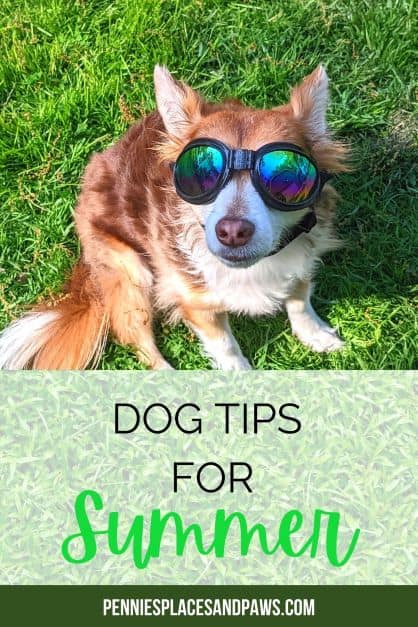
Amazon and the Amazon logo are trademarks of Amazon.com, Inc, or its affiliates.





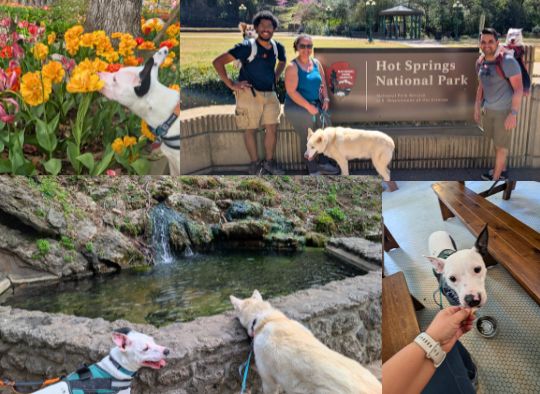

Thanks for these summer tips for dogs! I didn’t know about the skin test.
It works on humans too! Just another way to do a quick hydration check 🙂
Love these summer safety tips for dogs. Great reminders and guidelines to protect our dogs from the intense heat and mosquitoes and ticks especially.
Thanks! Lyme and heart disease are no joke!
All wonderful summer tips for dog owners! Thank you for sharing these.
You’re welcome! Hope they help!!
These are great safety tips for dogs in summer! I don’t have a dog right now, but these are good reminders for if I ever do get another dog. We seem to have been adopted by a cat at the moment. Ha!
Congrats on your new cat 🙂 It’s crazy how animals just adopt new people sometimes
These are great Dog Tips for summer travel. My family brings their dog when we go camping and it is fun to see them explore the area.
I LOVE taking our dogs camping. Makes it so much more enjoyable and I tend to see things I normally would have missed thanks to their noses 🙂
Excellent tips for making summer go smoothly with dogs. I’d never heard of the blue green algae toxicity…yikes! That’s good to know.
Thanks! Unfortunately, blue-green algae seems to be becoming more common. I see a ton of posts on social media of people that learned about the dangers too late 🙁
These are great summer tips for dogs! Thanks for sharing them!
Thank you! Hope other dog owners find it useful 🙂
Thank you SO MUCH for writing Summer Dog Tips!!! I know so many of us will find this useful. And it’s so important to protect our best friends. Also, those dog sunnies/goggles are so cute!
Thanks! I think he looks super cool in his sunglasses!!!